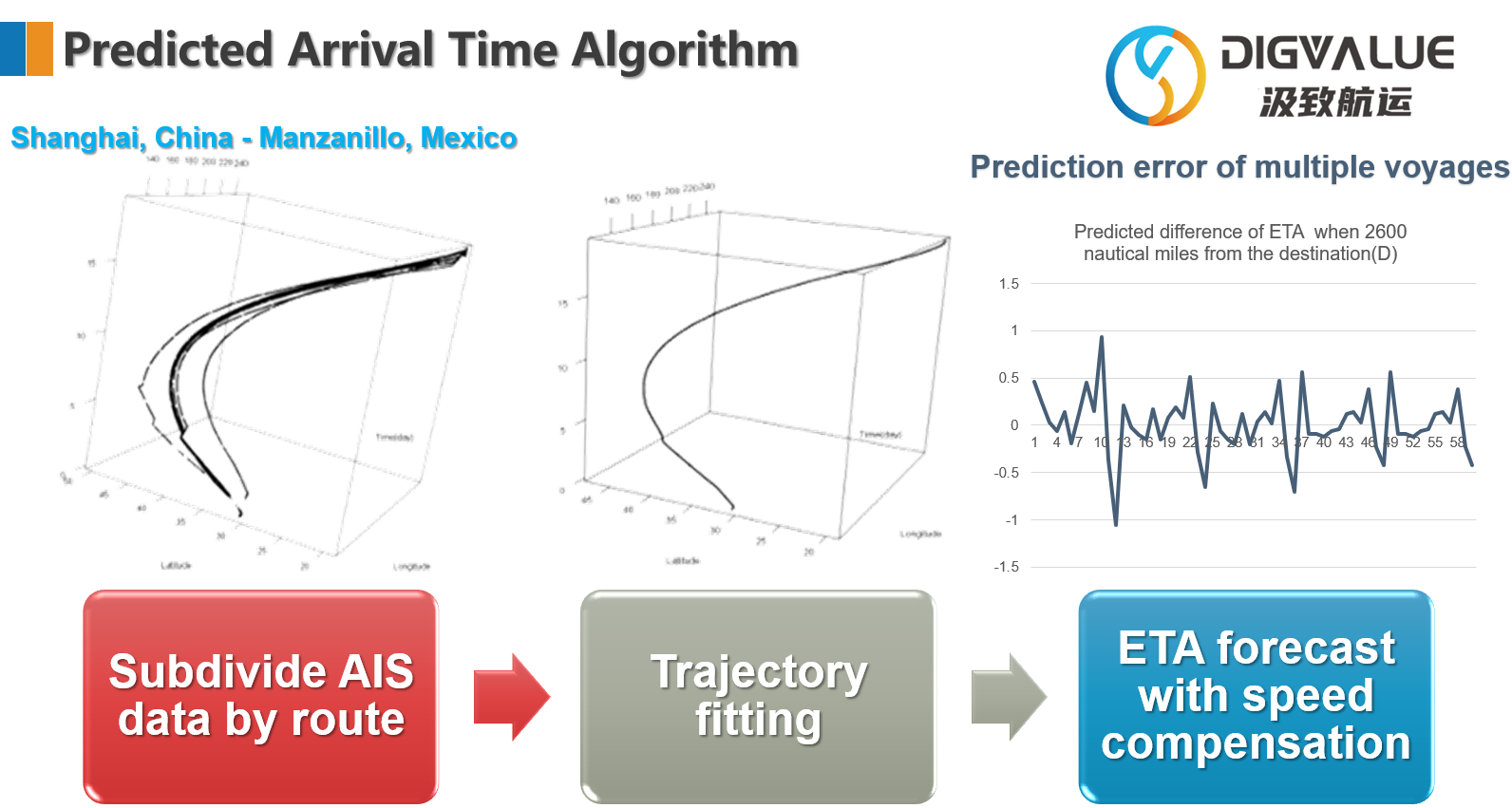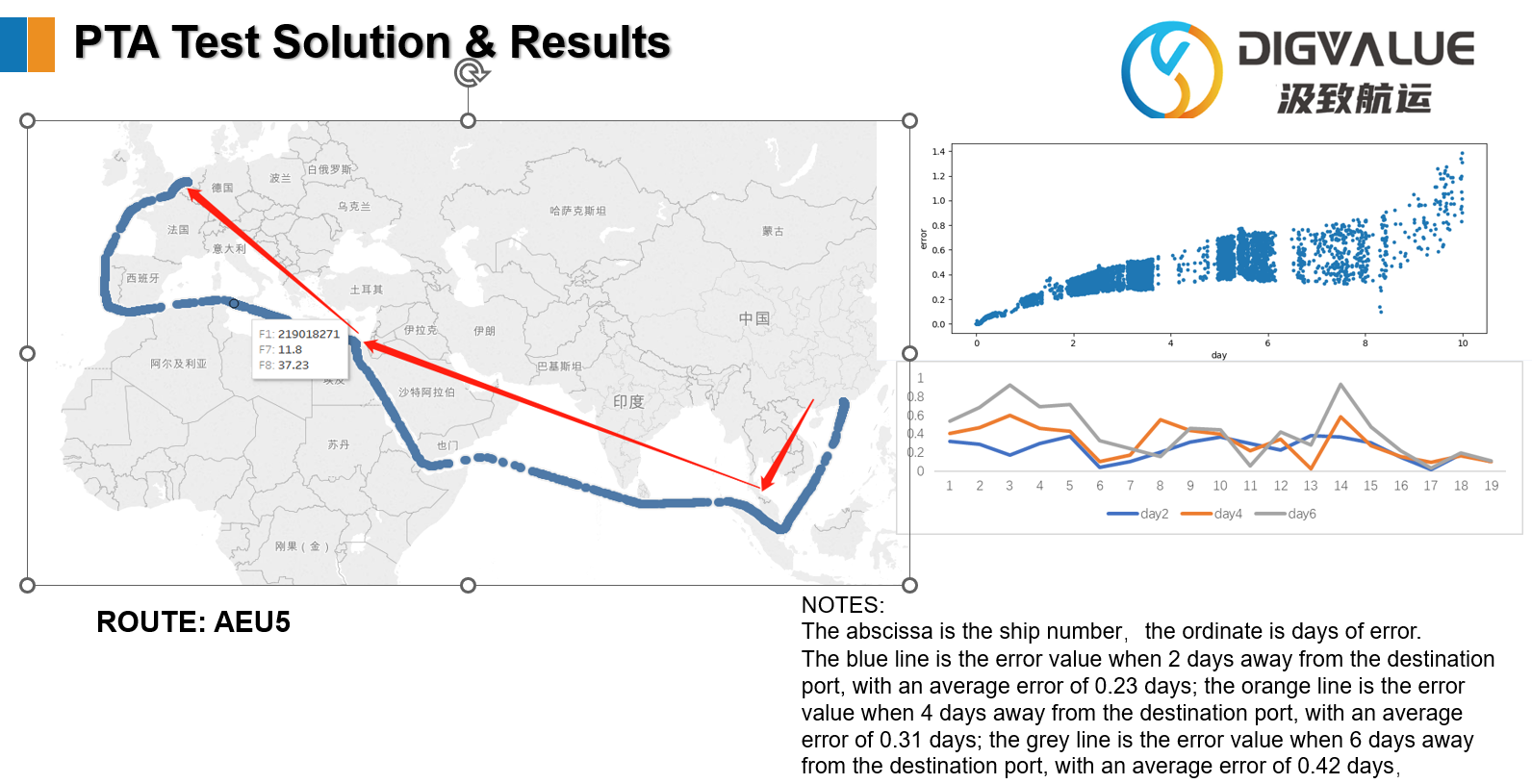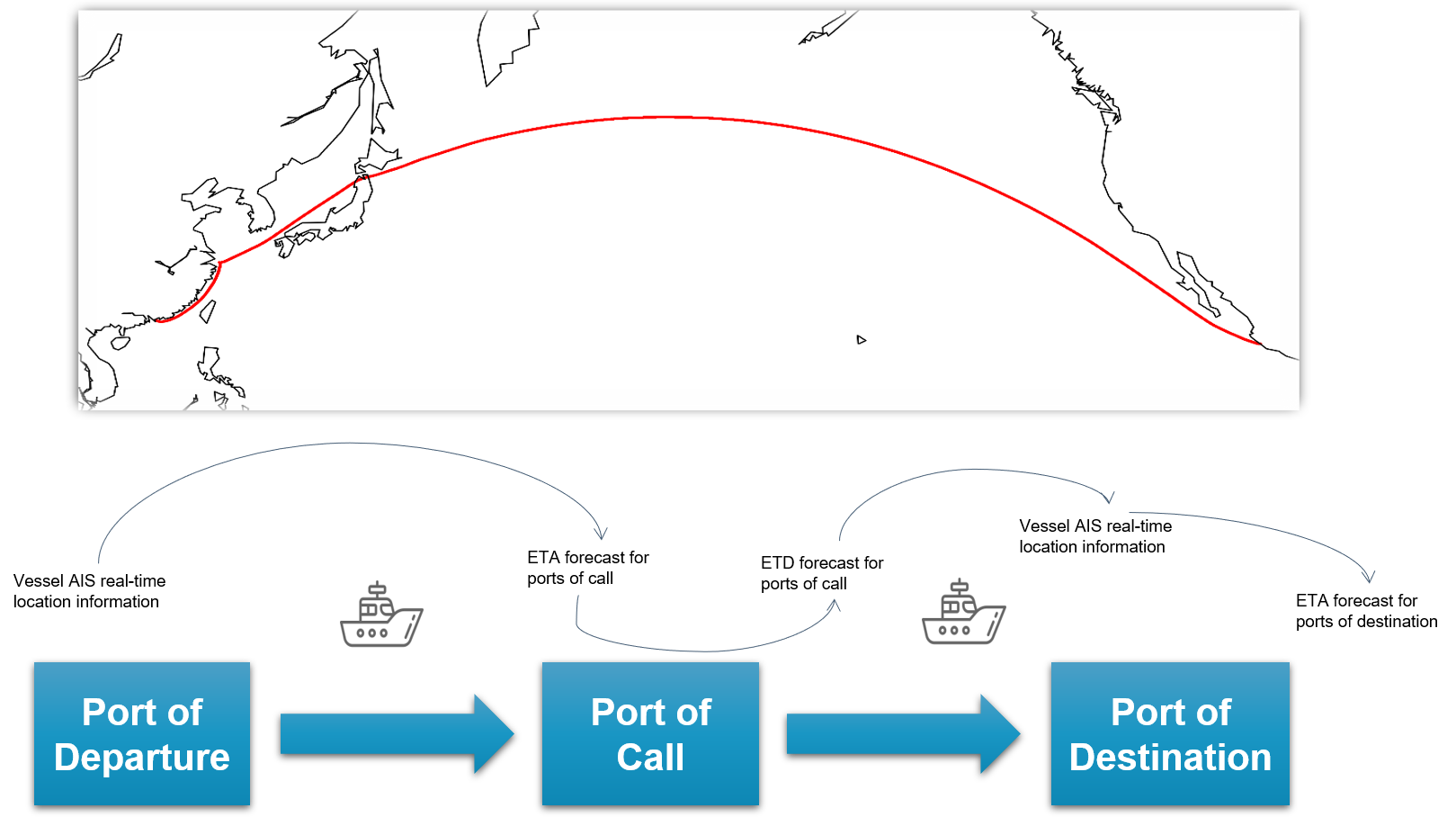PREDICTED ARRIVAL TIME(PTA) SOLUTION
ETA forecasts are most important for designation of port operation plans, meeting the need for logistics visualization by shippers, or concerning of futures investors on the number of arrivals of bulk cargoes.
|
TYPE |
function |
description |
query criteria |
Return value |
|
container PTA |
ship schedule |
Inquire about the ship's navigation plan (or voyage cycle, Attachment rule) |
Ship name, IMO No or Port of origin and port of destination |
Ship information, company, list of ports of call, planned time of arrival at each port |
|
PTA |
Query the time when the specified ship arrives at the specified port (estimated) |
IMO, port of destination |
Scheduled time of arrival of the ship at the port (schedule planning time, AIS planning time, prediction time by PTA algorithm) |
|
|
bulk cargo PTA |
Dry bulk PTA |
vessels international routes with deadweight tons more than 3000 tons,estimated port of destination and time of arrival of the designated vessel n the high probability |
Ship name, IMO |
Possible destinations (ports), probability of arrival at the port, estimated time of arrival at the port(AIS planning time, prediction time by PTA algorithm) |
|
Liquid bulk PTA |
vessels international routes with deadweight tons more than 3000 tons,estimated port of destination and time of arrival of the designated vessel n the high probability |
Ship name, IMO |
Possible destinations (ports),probability of arrival at the port, estimated time of arrival at the port(AIS planning time, prediction time by PTA algorithm) |

Based on the AIS datas of 2019, we created a Yantian-Rotterdam AEU5 segmented route model. As shown, it started from Yantian port, passed through Tanjung pelpas, Suez Canal, and finally arrived at Rotterdam port.
Route parameter estimation:



